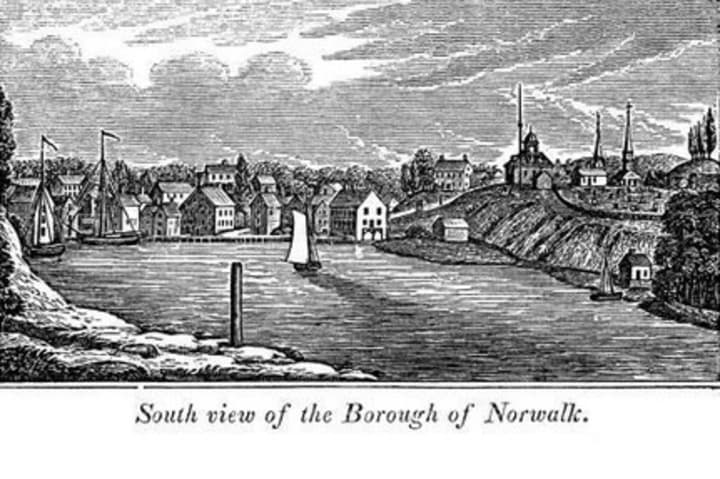In July of 1779 the American Revolution had reached a crucial stage. British occupation of both Boston and New York left the patriots of coastal Connecticut sandwiched between two of the Crown’s most important strongholds.
As a result, the Long Island Sound became an overseas highway of British vessels transporting food, supplies, and prisoners between New England, the Mid-Atlantic and Caribbean. Armed with agile crafts and light weaponry, colonists on Long Island’s North Shore and Connecticut’s coast engaged in maritime guerilla tactics on the heavily armored British fleet traversing the Sound.
Colonists in Norwalk, Fairfield, and New Haven were particularly noted in their constant harassment of Her Majesty’s ships. Hoping to send a message to all coastal towns, British General William Tryon and his fleet began a series of raids up and down Southern Connecticut. After looting New Haven and Fairfield, Tryon and his men landed at Calf Pasture beach on July 10th and began to march inland.
Destroying everything in their past, the British invaders were met with heaving resistance as they marched from their landing craft to South Norwalk. Under the organization of local leaders, the heavily outmanned Norwalk militia hidden high above the bluffs along West Avenue picked off unsuspecting British regulars. Undeterred, General Tryon's men marched on, leaving no building unscathed.
After rendezvousing along the mouth of the Norwalk River at Wall Street, the general’s men began their return to the beach, all while burning everything in their path. Throughout the entire attack, Tryon is rumored to have sat in a rocking chair atop a Grumman Hill and overlooking the entire town as it burn beneath him. Before the embers had extinguished, Tryon returned to his fleet and departed from Calf Pasture leaving a wake of destruction behind.
After the end of the war, the newly formed Congress recognized the sacrifices made by the raiders of coastal Connecticut and apportioned tracts of land in central Ohio for Connecticut residents wishing to relocate.
As a result, many of the towns in modern day Huron and Eerie Counties bear familiar names such as Ridgefield, New Haven, Groton, Greenwich and even Norwalk.
So next time you stare out to the Sound or take a walk along the beach, squint your eyes and you might just smell the burning of wood, hear the shouting of British regulars, and see the towering ships anchored just beyond the Norwalk Islands.
John Haffey Jr. is a Norwalk resident and Long Island Sound enthusiast and has navigated and fished Coastal Connecticut for years.
Click here to follow Daily Voice Norwalk and receive free news updates.


